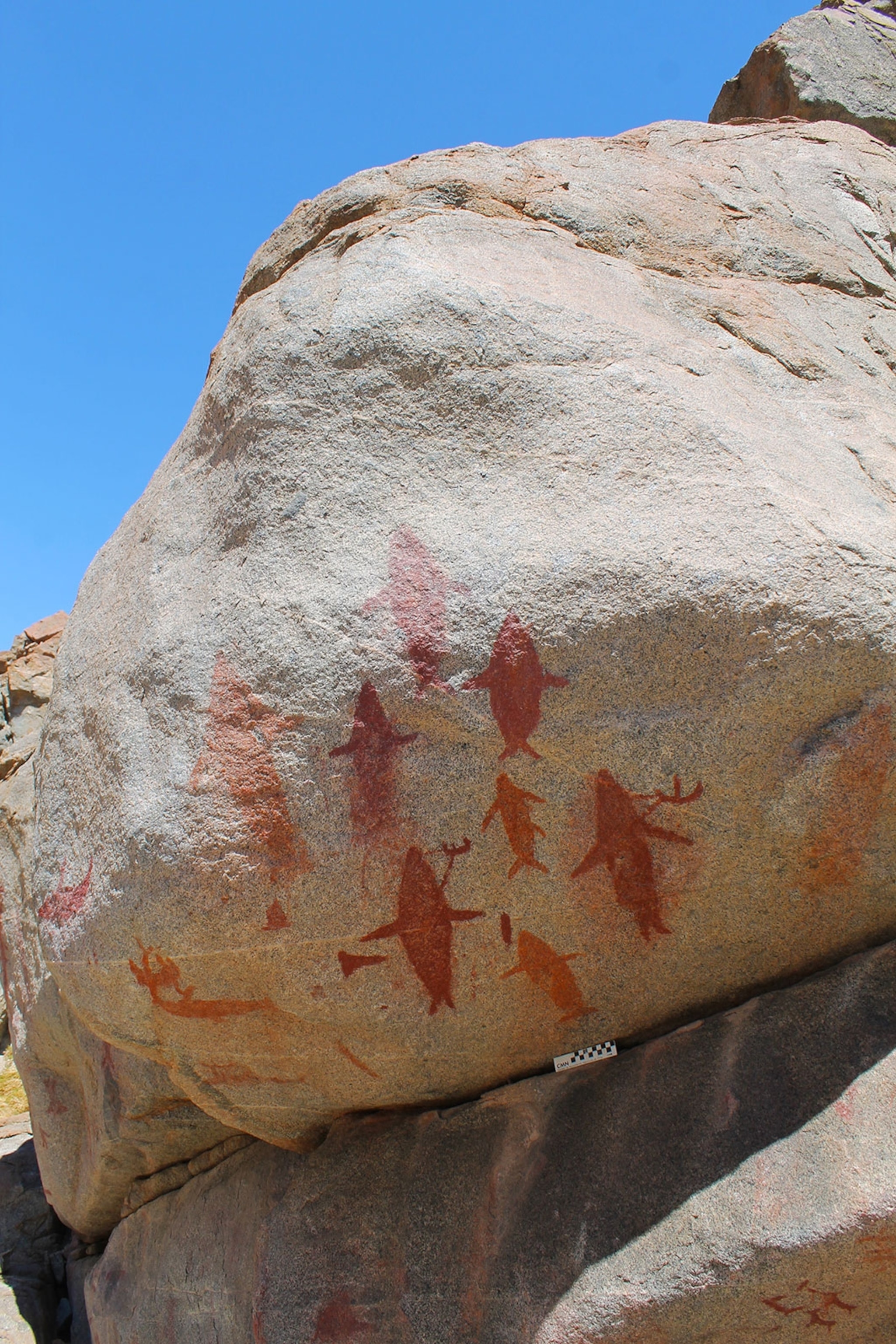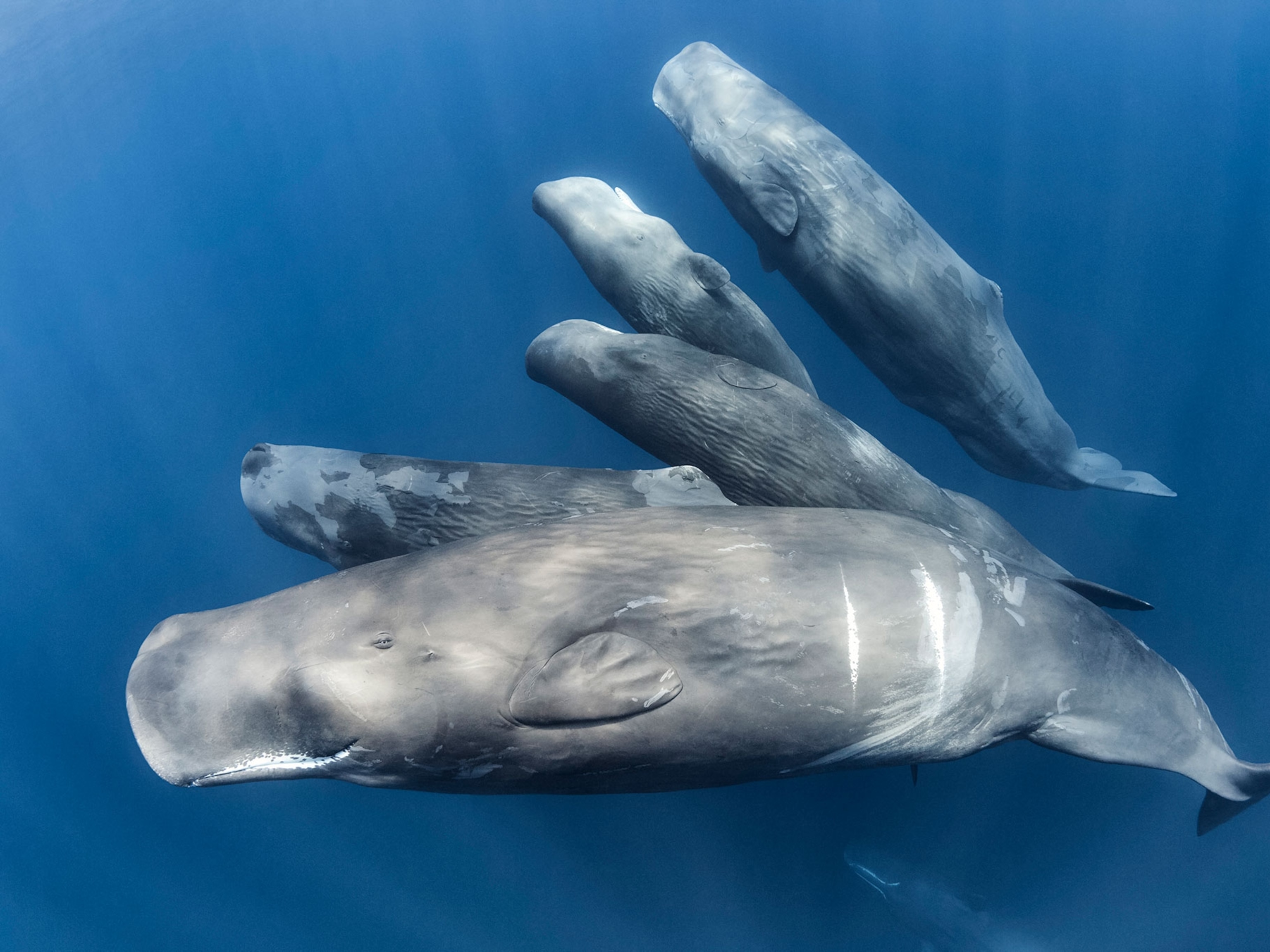
Dramatic Whale Hunts Depicted in Ancient Rock Art
The paintings match historical artifacts that suggest hunters set out on small boats with makeshift harpoons.
Using makeshift harpoons and rafts, a hunter spears a large whale.
It would have been a welcome kill for hunter-gatherers living in one of the world's driest regions, Chile's Atacama Desert, 1,500-years ago.
The moment, and others like it, were frozen in time by ancient artists nearly 1,500 years ago. In bright red rock art, painted in iron-oxide, the ancient hunting tradition can still be seen. Whales, swordfish, sea lions, and sharks are among the depictions, say archaeologists.
A new study, published in the journal Antiquity, outlines just how critical marine hunting was for hunter-gatherers during this time and how rock art tells its dramatic story.
First Findings
Rock art was first found in this part of Chile by anthropologists in the early 20th century. Nestled between the ocean and the desert is a valley called El Médano, where the first rock art in this region was catalogued. For over a thousand years the rock art's existence was known only to local Paposo people who live in the region.
The new study focuses on cave art found several miles north of El Médino, at a site called Izcuña, but paintings from the time period are generally referred to as El Médano art.
(Read about cave art showing the possible first images of dogs.)

New Art
In the Izcuña ravine, 328 different paintings were found on 24 different blocks of rock. Many have been degraded by moisture brought by camanchacas, or cloud banks that form over the Chilean coast and move inland. But enough of the art has been preserved to date it to the other El Médino art.
The most common type of art shows the silhouettes of large fish. Other images show hunting scenes with rafts and weapons. Terrestrial animals are also present in the art, but finding depictions of marine life in rock art is rarer.
The study's author, Benjamín Ballester, notes that the fish or whales are always drawn oversized to the hunters and their rafts, making the prey a daunting antagonist.
"Overall, hunting is represented as a specialized, solitary, individual practice, led by a selected few people," the study notes.
A Marine Economy
More than just art, the images illustrate archaeological evidence that marine hunting was an essential part of this society.
During previous excavations, archaeologists have found makeshift harpoons constructed from 10-foot wooden shafts, with detachable arrowheads dating as far back as 7,000 years ago.
Ballester says looking at the artifacts and art as a whole, archaeologists can piece together a better understanding of Chile's ancient life.
"Marine [hunts] were one of the most important elements of their subsistence, but they were also great fishers and mollusk gatherers," he says.
"From their coastal settlements, they actively participated in large-scale exchange networks with agro-pastoralist communities from the interior valleys and oasis of Atacama, specially circulating dried fish in exchange of manufactured goods."





